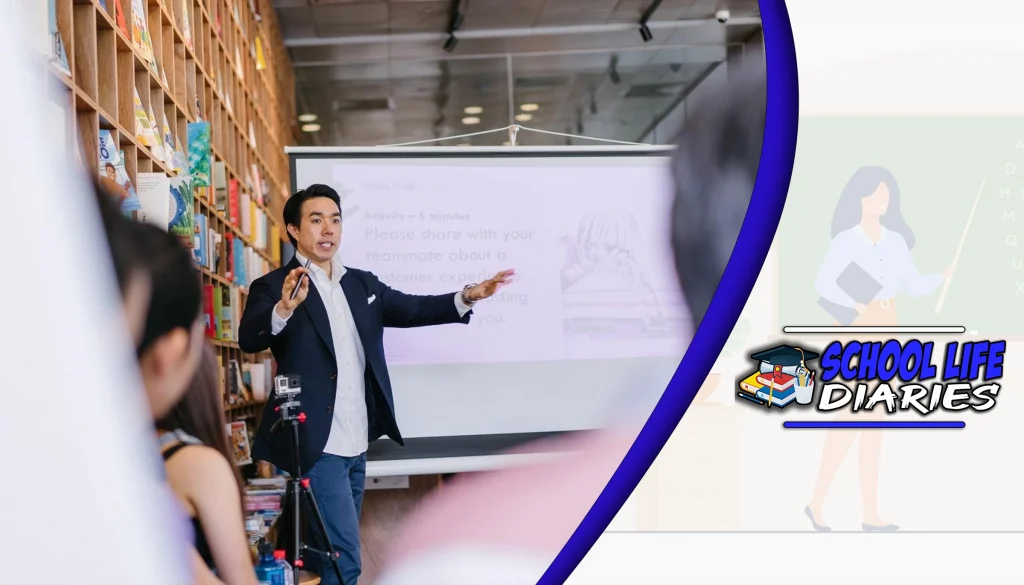Competitive teaching is a way of teaching that encourages students to compete against each other in order to learn. This type of teaching can be used in a variety of different ways, such as having students race to complete a task or providing a reward for the student who learns the most information.
Is Teaching Competitive?
Yes, teaching can be competitive in different ways depending on the specific field or discipline. For example, teaching math or science may be more competitive than teaching social studies or English. Additionally, competition for teaching jobs may be fiercer in urban areas than in suburban or rural areas. In general, though, the competition for teaching jobs has increased in recent years as the number of teachers retiring has begun to exceed the number of new teachers entering the workforce.
So, if you’re thinking about becoming a teacher, it’s important to be aware of the level of competition you may face. However, don’t let the competition discourage you! There are many ways to make yourself stand out as a candidate, and with hard work and dedication, you can be successful in landing the teaching job you want.
Is Traditional Teaching Competitive?
Yes, traditional teaching is competitive. It can be difficult to get a job in traditional teaching, and there are a lot of people vying for the same jobs.
However, it is also a very rewarding career, and the opportunities for growth are limitless. Traditional teaching is a great way to make a difference in the world, and it is a career that will always be in demand. There are many advantages to traditional teaching, and if you are considering a career in teaching, it is definitely worth considering traditional teaching.
Is Online Teaching Competitive?
The answer to this question depends on the definition of “competitive.” From one perspective, online teaching may be seen as highly competitive because there are numerous online programs available and students can easily compare programs. From another perspective, online teaching may not be as competitive as traditional teaching because there are not as many online programs available and students may not be familiar with all of the options.

On the other hand, competition for these opportunities can be fierce. There are educators who are interested in teaching online, and so institutions and platforms often receive many applications for each opening. Additionally, since most courses are taught remotely, instructors do not have the opportunity to meet their students in person, which can make it difficult to stand out from the competition.
Is Primary Teaching Competitive?
Yes, primary teaching is competitive. However, gaining the necessary PGCE qualification and experience would increase your chances of securing a position. A minimum of 10 days of experience is required to increase your chances of being successful in securing the role of primary teacher.
In larger metropolitan areas, teaching can be a highly competitive field, but in rural areas, teaching may be less competitive.
Is a Teacher’s Salary Competitive?
Yes, Some regions of the country and larger districts pay experienced teachers more than other professions that require less experience. But entry-level teacher salaries are not as competitive as some other professions.
On one hand, teachers’ salaries are often quite low when compared to other professions with similar levels of education and training requirements. On the other hand, there are many benefits that come with being a teacher, such as summers off and good job security. It really depends on what you are looking for in a career.
What is Competitive Learning?
Competitive human learning is a process that occurs when individuals learn in order to outperform others. This type of learning is driven by the desire to be better than others and can lead to increased motivation and improved performance.
Competitive human learning can be a powerful tool for improving performance. It can motivate individuals to push themselves harder and learn more effectively. However, it is important to ensure that the competition is fair and that the goals are achievable. Otherwise, the competition could become discouraging and possibly cause a lack of drive and subpar performance.
Pros and Cons of Competitive Teaching at a Charter School
Pros
- Charter schools are typically more innovative and creative in their teaching methods.
- Charter schools typically have smaller class sizes, which allows for more individualized attention for students.
- Charter school teaching is often more accountable to parents and the community, as they are typically funded by scholarships or vouchers.
- Charter schools often have a longer school day or year, which allows for more instructional time.
- Charter schools typically have high academic standards and expectations for their students.
- Charter schools often have a strong focus on character education.
- Charter schools often have a more diverse student population, which offers students a wider range of perspectives.
- Charter schools often have a more rigorous curriculum than traditional public schools.
- Charter schools often have better facilities and resources than traditional public schools.
- Charter schools typically provide a more challenging and stimulating learning environment than traditional public schools.
- A charter school is a public, non-profit school that is independently operated.
- Charter schools are tuition-free and open to all students.
- Charter schools offer parents more choices in education for their children.
- Charter schools provide an individualized approach to learning.
Cons
- Charter schools are often not as well-funded as traditional public schools.
- Charter schools can be extremely demanding and require a lot of time and energy from their teachers.
- There is often a lot of pressure to perform at charter schools, which can be stressful for teachers.
- Charter schools sometimes have high turnover rates among their teaching staff.
- Teachers at charter schools may not be unionized, which can lead to less job security.
- Charter schools sometimes have strict rules and regulations that can be difficult to follow.
- There can be a lot of pressure to meet standardized test scores at charter schools.
- Teachers at charter schools may not receive the same benefits as traditional public school teachers.
- Charter schools sometimes have a negative stigma attached to them.
- There is no guarantee that working at a charter school will be any more rewarding than working at a traditional public school.
Defining the Two Competitive Teaching Strategies
There are two main teaching strategies that can be used in the classroom: direct instruction and discovery learning.
Direct Instruction
Direct instruction is a teacher-led approach where the teacher provides a clear explanation of the task and models how to complete it.
Pros
One of the biggest pros of direct instruction is that it is very effective in getting students to learn the material. This is because the teacher is able to provide clear and concise explanations that are easy for students to follow. Additionally, since the teacher is leading the lesson, it is easier to keep students on track and make sure that they are understanding the material.
Cons
One of the cons of direct instruction is that it can be quite boring for students. If the teacher is not engaging or if the lesson is not interesting, students may find it difficult to pay attention and learn anything from the class. Since direct instruction is a teacher-led approach, it requires more planning and preparation on the part of the teacher.
Discovery Learning
Discovery learning is a student-led approach where students are encouraged to explore and figure out the task on their own.
Pros
Discovery learning is a great way to get students more engaged in the material. Since students are encouraged to explore and figure things out on their own, they are more likely to be interested in the lesson. Additionally, discovery learning can help students develop critical thinking skills and learn how to problem-solve.
Cons
One of the drawbacks of discovery learning is that it can be quite chaotic in the classroom. If students are not given clear instructions or if they are left to their own devices, it can be difficult for them to stay on task and actually learn anything. Since discovery learning is student-led, it can be difficult for teachers to keep track of everything that is going on.
Conclusion
Both strategies have pros and cons, so it is important to choose the one that will work best for your class and subject matter.
FAQs
Which Year of Teaching is the Hardest?
The hardest year of teaching is the year that you are just starting out. Without a doubt, the first year of teaching is the hardest. There are so many new things to learn, and you’re constantly trying to figure out how to be the best educator you can be. You’re optimistic and eager to start making a difference in your students’ lives, but you’re also feeling a little bit lost. It’s a lot of pressure, but it’s also an incredibly rewarding experience.
What Type of Teacher is Most in Demand?
The type of teacher who is in demand will vary depending on the school district and community. However, there are a few general types of teachers who are always in high demand:
- Science
- Math teachers
- Special education teachers
- Bilingual educators
- Early childhood educators.
Are Physical Education (PE) Teachers In Demand?
No, physical education teachers are not in demand. In fact, the demand for physical education teachers is declining. According to the National Association for Sport and Physical Education, the number of students enrolled in physical education classes has fallen by more than 25% over the last decade.




